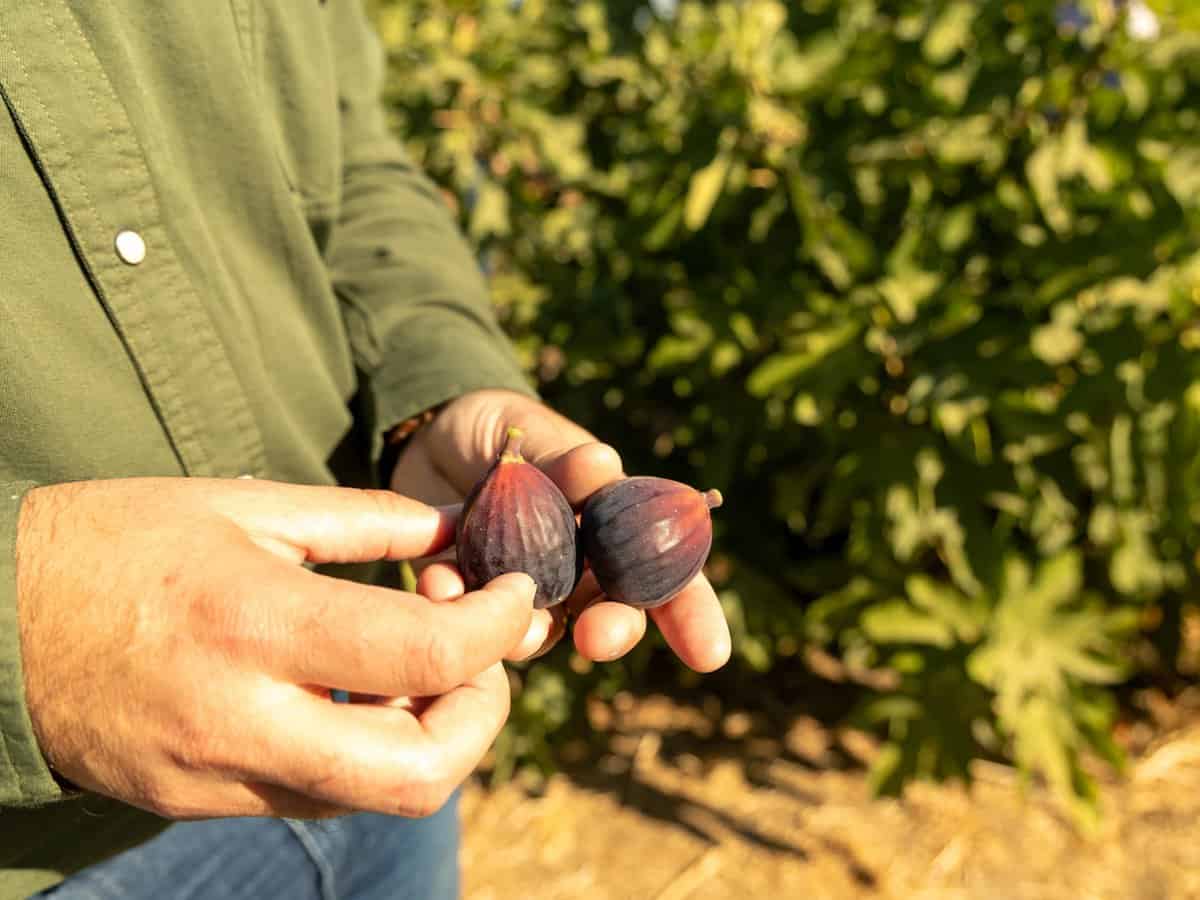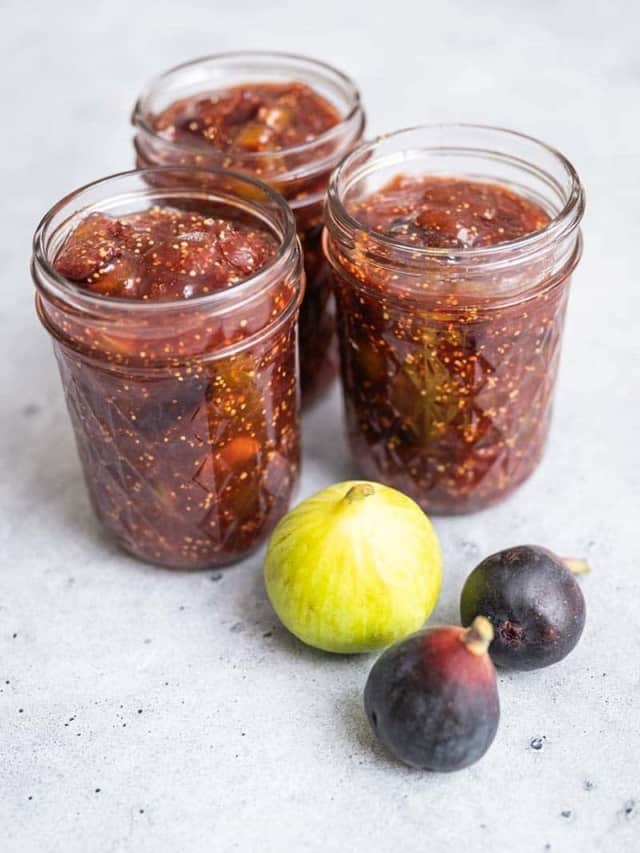How are Figs Grown in California?
Have you ever wondered how figs are grown? Let’s learn how fresh figs are grown in California – and how they are harvested and packaged!
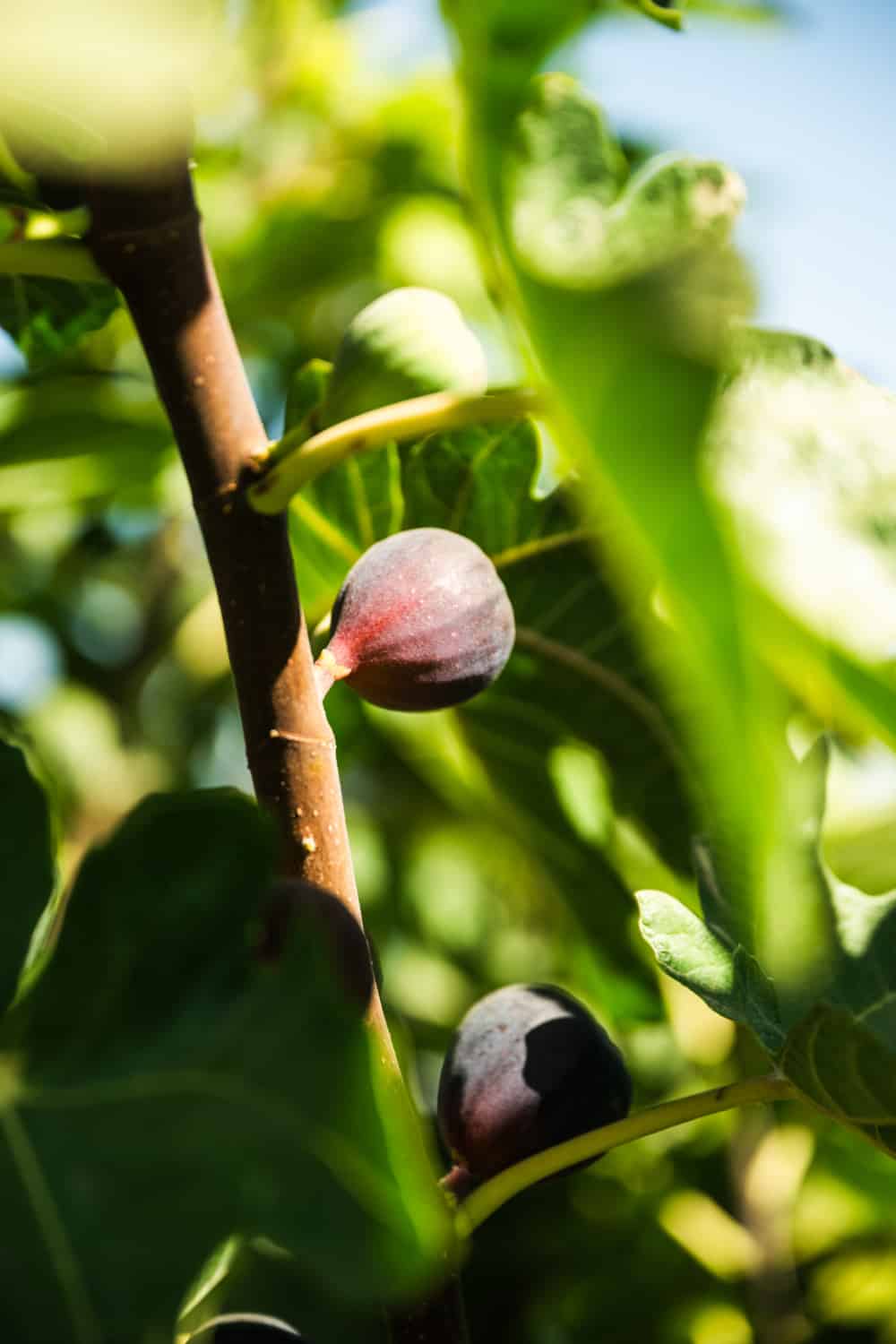
Obsessed with figs? You’re not alone. Humans have cultivated the seductively sweet fruit for over 11,400 years – a whopping 5,000 years before other early agricultural commodities like grapes and olives! Why? Fig trees produce fruit for a large chunk of the year. We can assume they would have been a valuable food source for early communities given their productivity. Ancient varieties of figs were sterile, but were incredibly simple to propagate and grow. Presumably, once people discovered how to use cuttings to “start” new trees, they easily provided plentiful fruit for their families and communities.
While we can’t brag that we’ve grown figs in California for literal millenia, we do have one pretty cool claim to fame – California farmers are responsible for 98% of the Nation’s fresh figs and 100% of the dried figs produced in the US!
When were figs first grown in California?
Like many fruits, figs were first brought to California by Spanish missionaries. The Mission variety was planted by Franciscan monks in San Diego around 1768. Around 100 years later, California’s first commercial fig orchards were planted.
Where are figs grown in California?
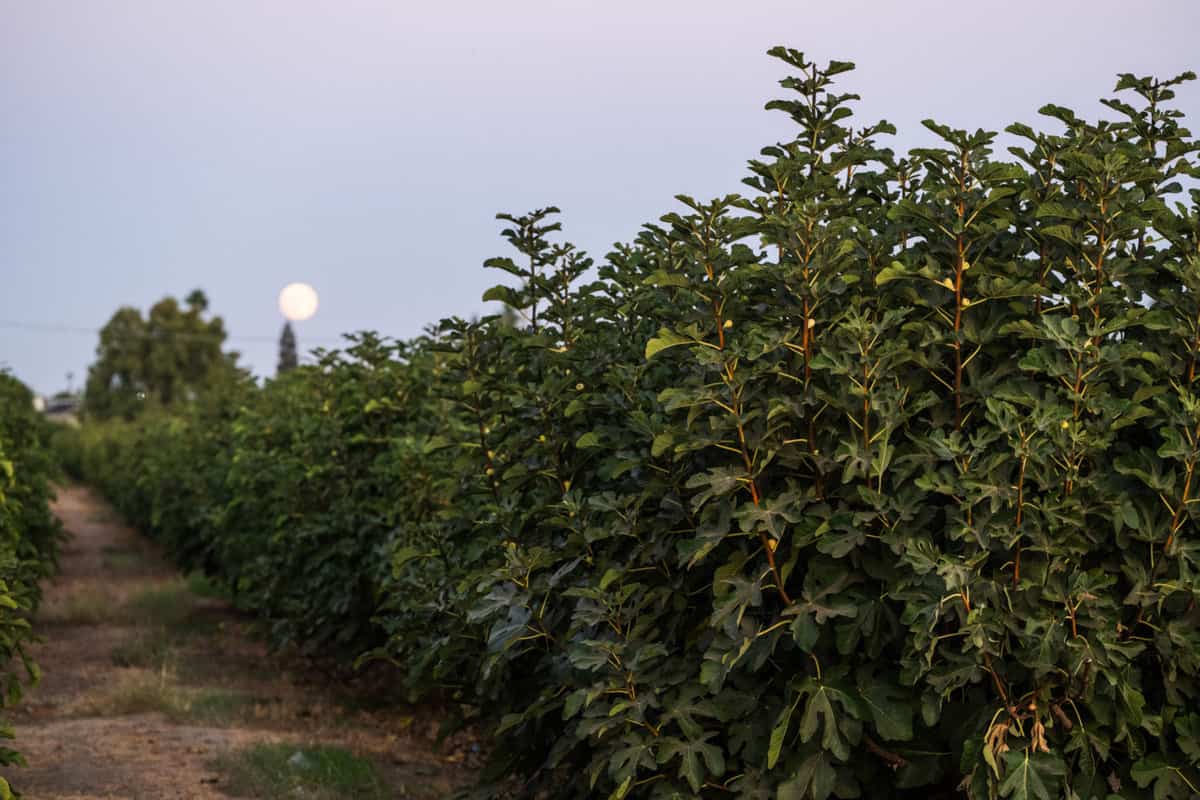
Although figs were initially planted in coastal regions, much of the Golden State’s production has moved further inland. Figs prefer dry, warm temperatures, so they flourish in the Central Valley, Riverside, and the Imperial Valley. The majority of California’s 9000+ acres of figs are found in the Central Valley near Madera, Fresno and Merced.
What varieties of figs are grown in California?
There are thousands of unique types of figs grown worldwide but California farmers specialize in five varieties of fresh figs. Those five are Mission, Tiger, Brown Turkey, Kadota and Sierra. California also produces two varieties of dried figs – Golden and Mission.
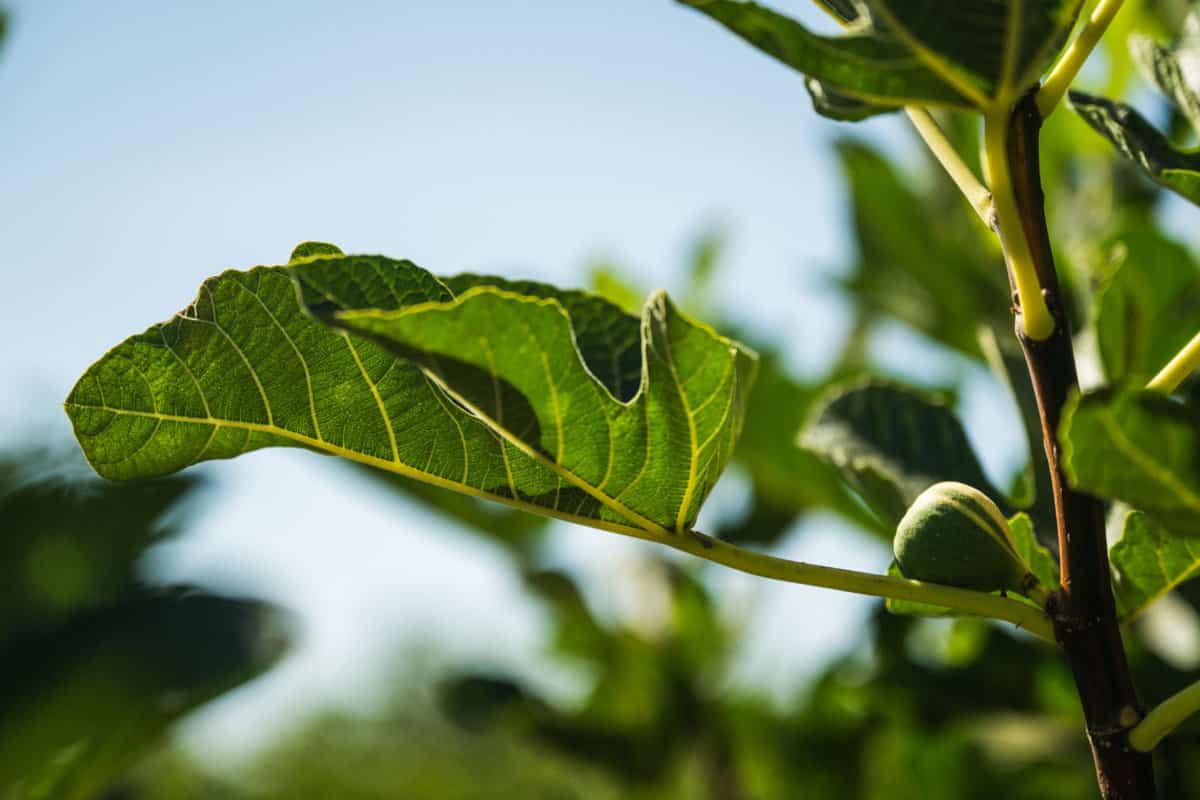
How are figs grown in California?
Figs are a permanent crop. Newly planted trees must mature for about 5-7 years before producing fruit, but can remain productive for over 100 years!
Dormancy + Pruning
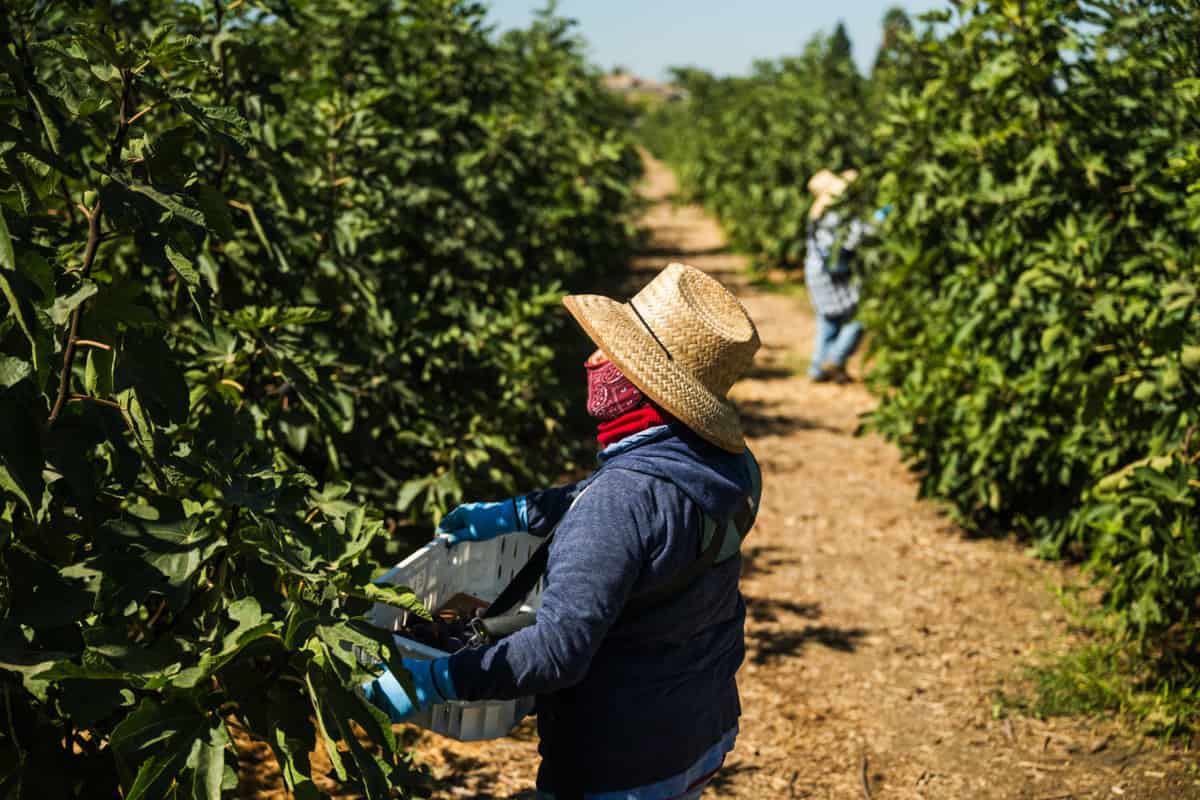
After the first frost (usually around November), the trees will lose their leaves and go dormant. During winter, fig growers prune their trees. Some California growers prune their trees to a lower, bush-like shape to help facilitate harvest. This lower shape allows all harvesting to be done from the ground, eliminating the need for the harvest team to climb up and down ladders.
Fruit development:
As the weather warms up, fig trees emerge from dormancy. Tiny buds appear on the branches and eventually become figs. Unlike many fruit trees, figs do not burst into bloom in early spring.
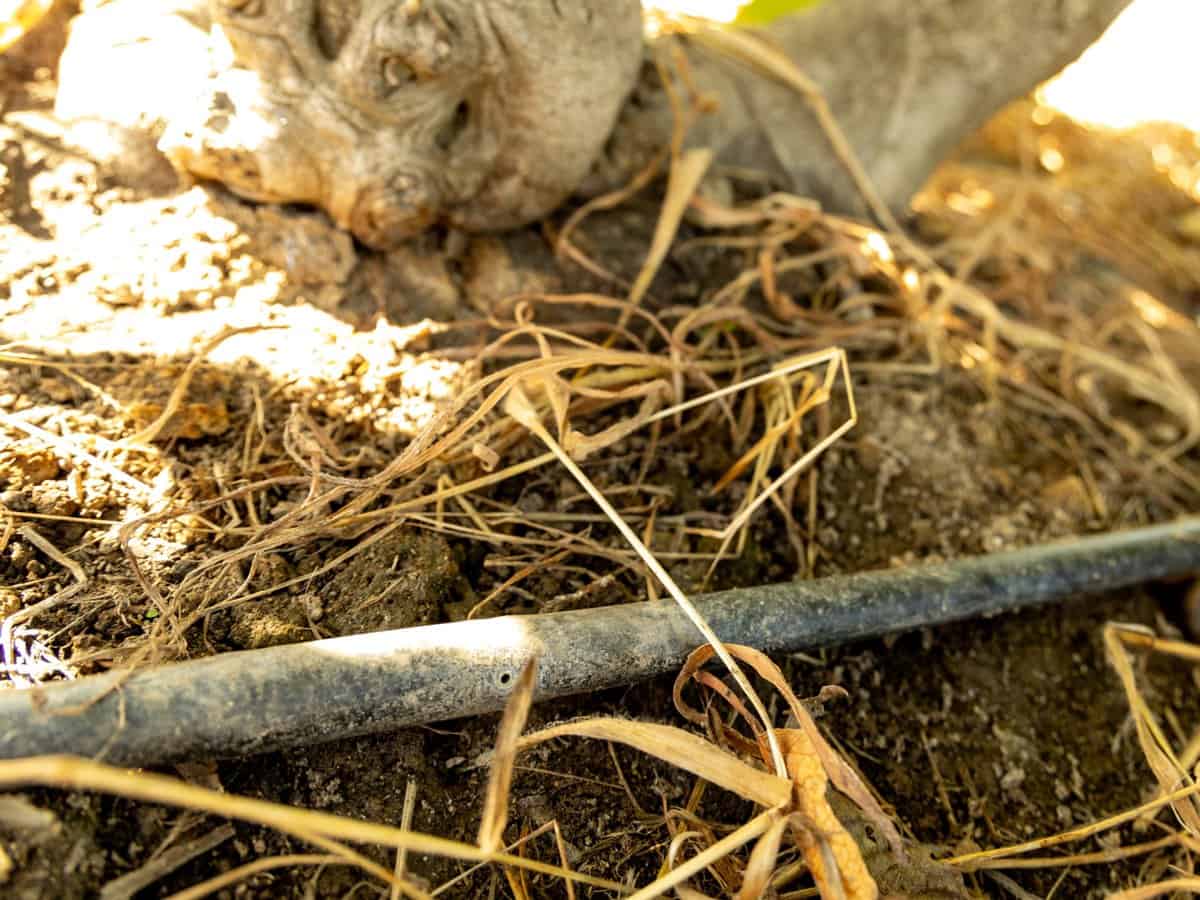
Fig flowers are inverted, meaning they’re inside of the fruit. The hidden flowers are self-pollinating and begin their transformation into juicy, delicious figs! Soon after, leaves sprout. At this point, most growers use drip irrigation and soil monitors to ensure that each tree receives the appropriate water and nutrients necessary to produce premium-quality fruit.
Are there wasps in figs?
There are no wasps in your figs – at least not if your figs were grown in the Golden State! All five of the varieties of figs commercially grown in California are self-pollinating. They don’t require wasps, bees – or another tree, for that matter – to produce fruit.
When are figs harvested?
California’s fig harvest begins in July and continues until the first frost! With the approach of summer, growers keep a watchful eye on the fruit. The state’s six commercially grown fig varieties all mature differently, but indicators of ripeness include color, “give” and sugar content.
How are figs harvested?
Because fig trees are harvested multiple times throughout the season, growers enlist a skilled team when figs begin to ripen. The team needs to identify which figs are fully ripe and which need to remain on the tree a little longer. Ripe fruits are removed from the tree by clipping the stem. They are then placed into special carry bags. Once the bags are full, the team loads ripe figs into bins. When the bins have reached capacity, they are loaded onto a truck and taken to a facility for sorting and packing.
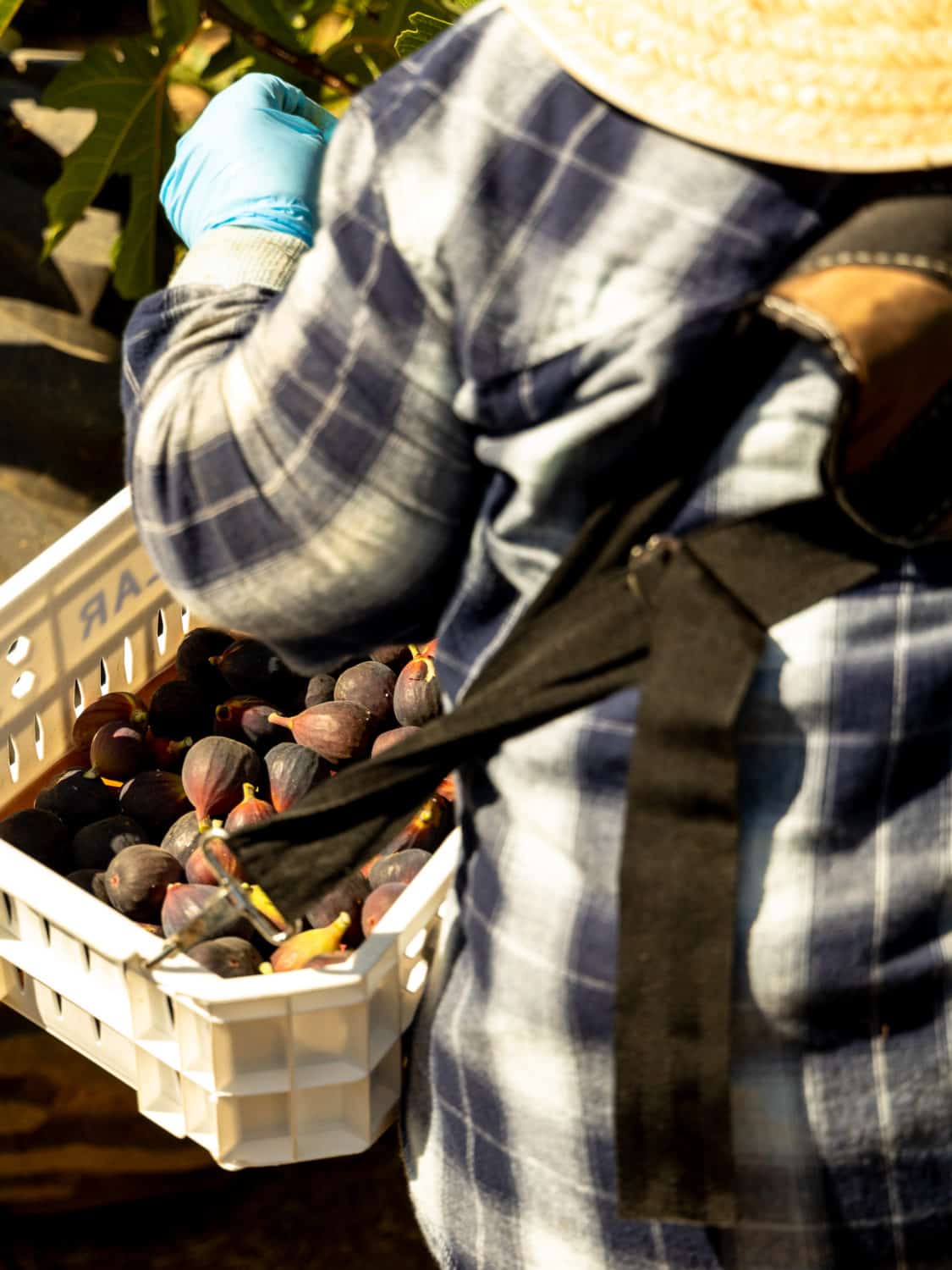
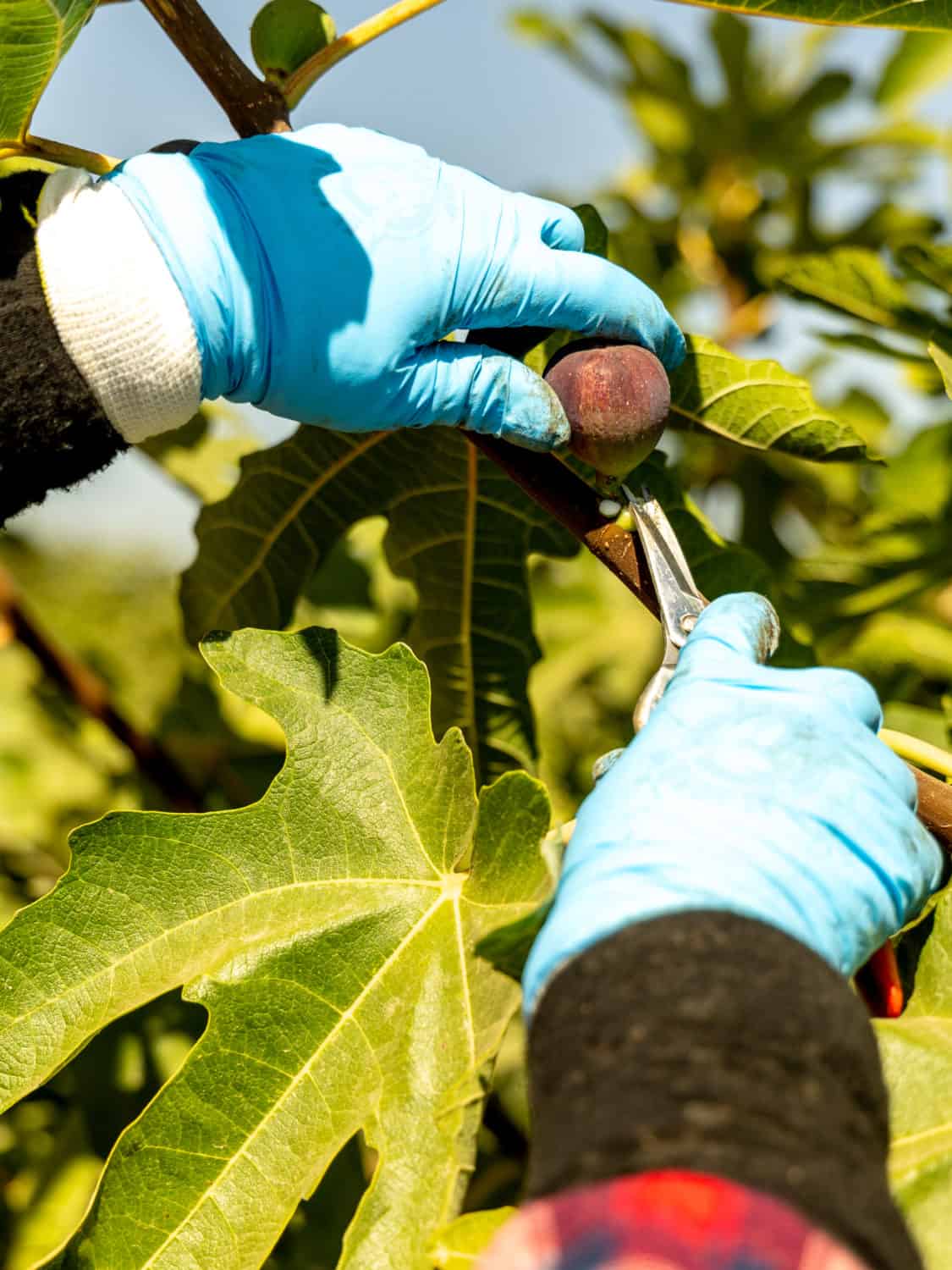
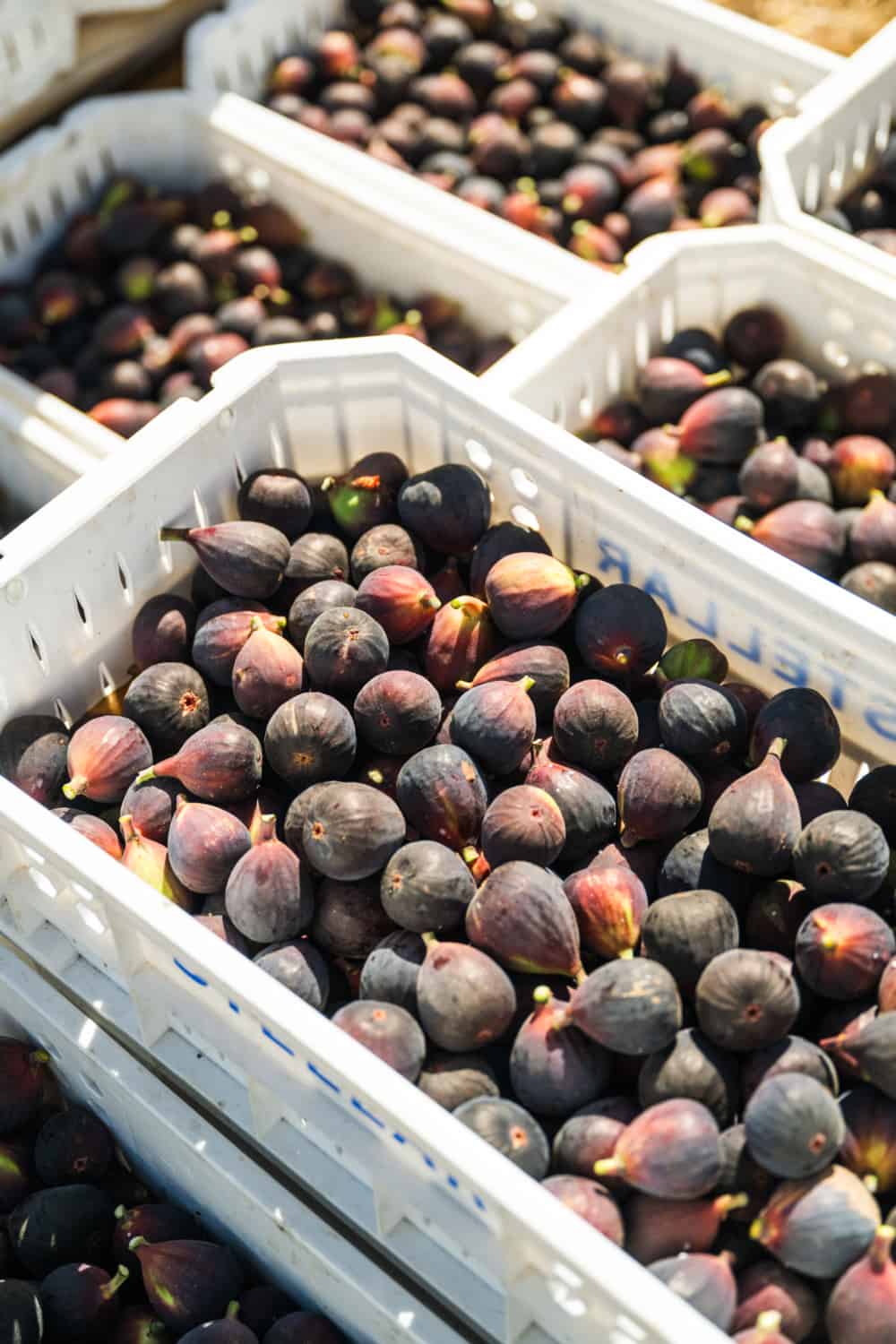
How are figs sorted and packed?
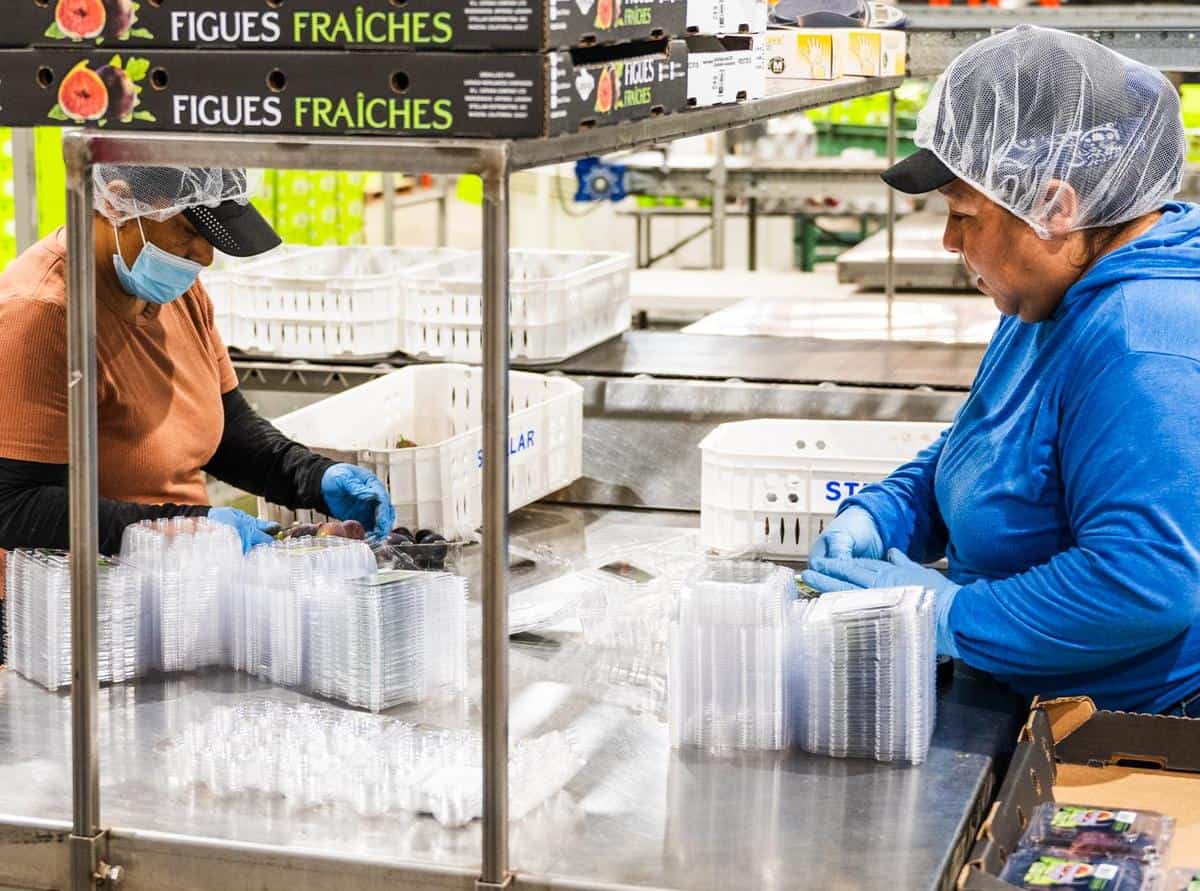
At the processing facility, fresh figs are visually inspected for defects, sorted by size, and packed into crates or plastic clamshell containers. Then the packed figs are placed on pallets, stacked and taken to cold storage. From storage, temperature-controlled transportation ships the fresh figs to your local grocer.
What about dried figs?
California produces 100% of the Nation’s dried figs! After harvest, dried fig producers wash and sort figs in preparation for the drying stage. Once dried, they go through packing, then ship off to your local grocer.
How to tell if your figs are from California
Look for the California Grown license plate on the product packaging or the store’s shelves. Pro-tip: Stores should list the country of origin for produce. If the figs were grown in the United States, it’s safe to say they were California Grown.
Learn more about how to tell where your produce is from!
How long will figs last?
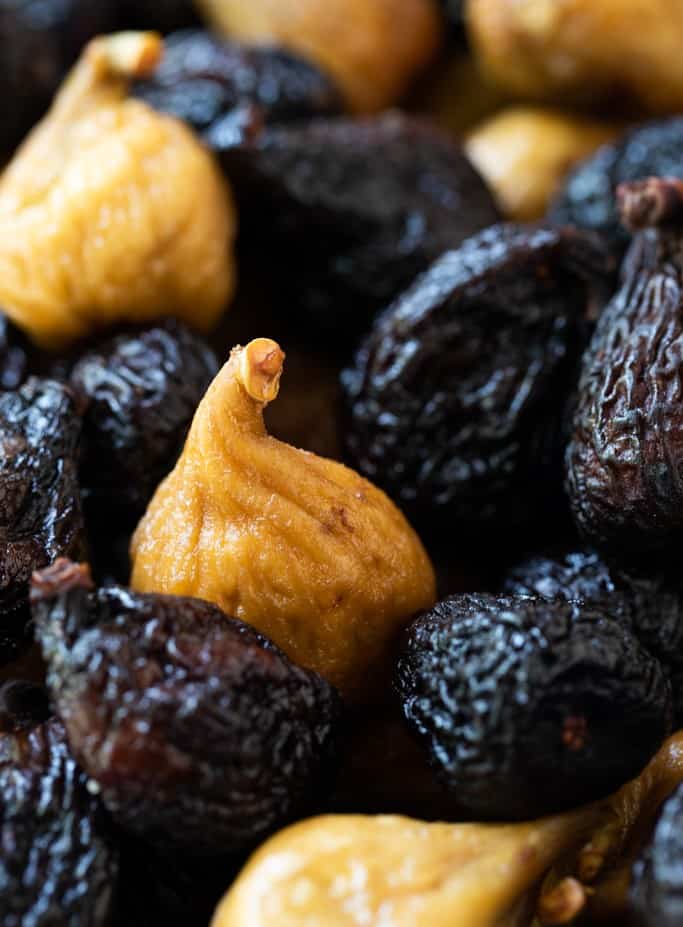
Because picking takes place at the peak of ripeness, fresh figs have a short shelf life! At room temperature, figs may last 2-3 days. If refrigerated properly, figs can last for up to a week. Freeze your figs and they are good for up to a year!
Dried figs are flavorful, always in season and last up to a year!
How to store figs
Unless you use your figs immediately, it is best to store fresh figs in the refrigerator. You can wrap each fig separately in plastic wrap or store them in a cardboard container using paper towels to absorb extra moisture and keep the figs from touching.
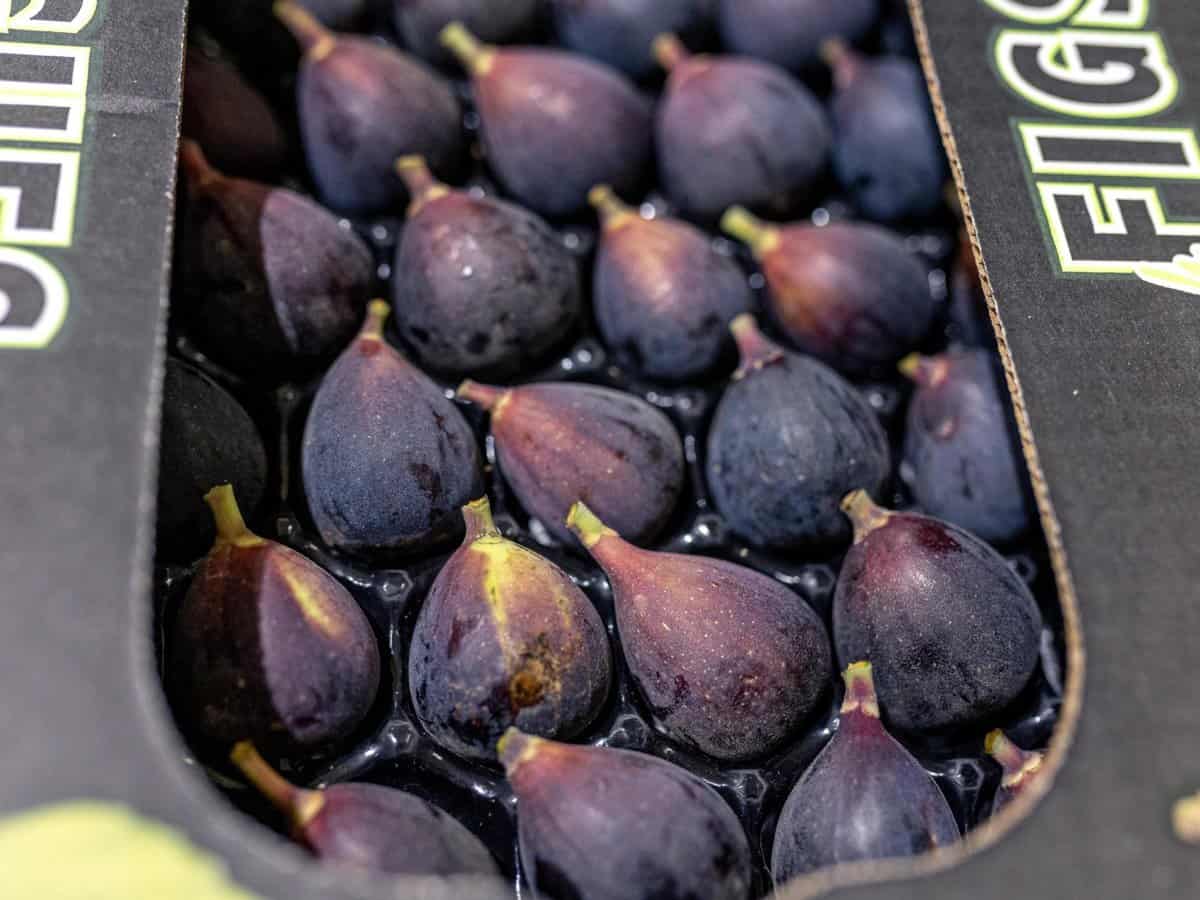
Meet a fig farmer
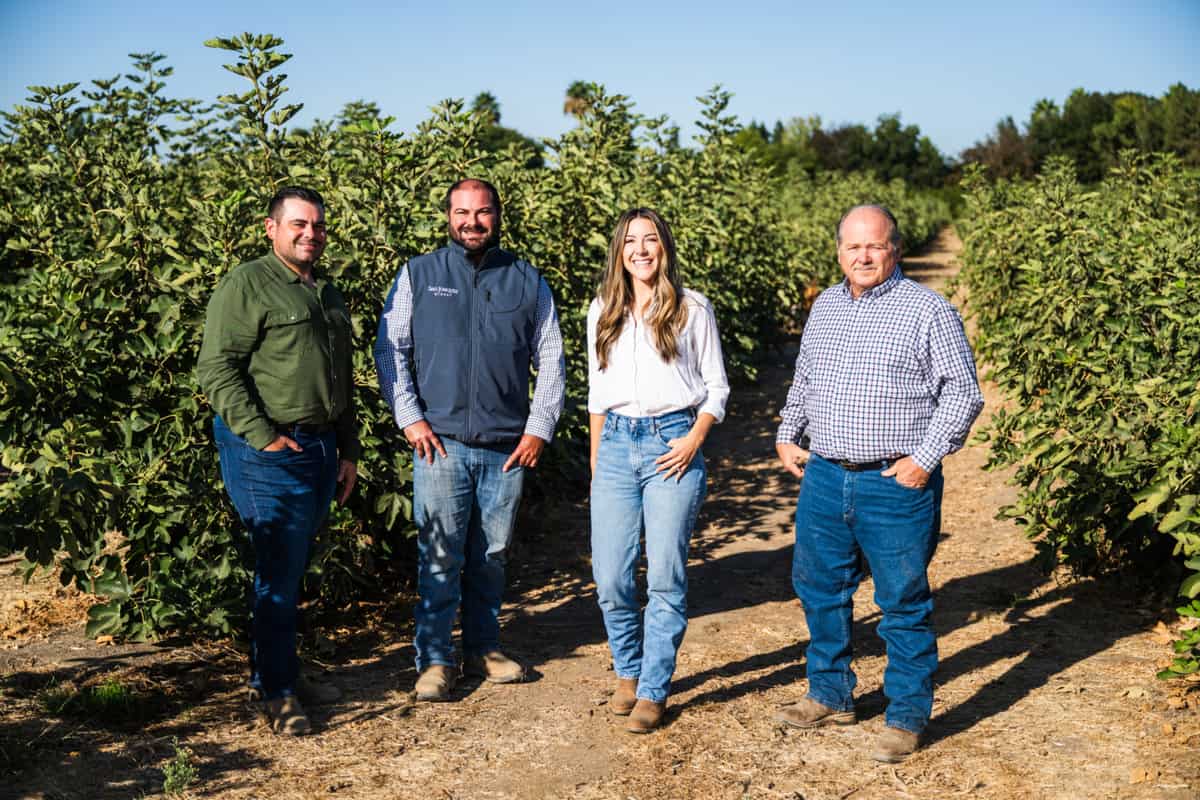
The Schafer Family grows conventional and organic fresh figs at their Madera, California ranch. They enjoy growing figs because the relatively drought-resistant fruit thrives in the warm, dry climate of the Central Valley. In addition to figs, they grow a variety of other permanent crops, including kiwis, raisins and almonds, and run San Joaquin Wine Company!
“We are constantly adapting, learning and trying to perfect the proper way to grow them. It’s been a long journey but we’re here to learn and be better.” – Jimmy Schafer
Our favorite fig recipes!
Roasted Sweetpotatoes with Scallions and Figs
Sweetpotatoes and Figs are an unexpectedly delicious pairing! Bonus: This amazing recipe from Chef Yotam Ottolenghi can be made with fresh figs or Dried California Figs. It’s equally delicious either way.
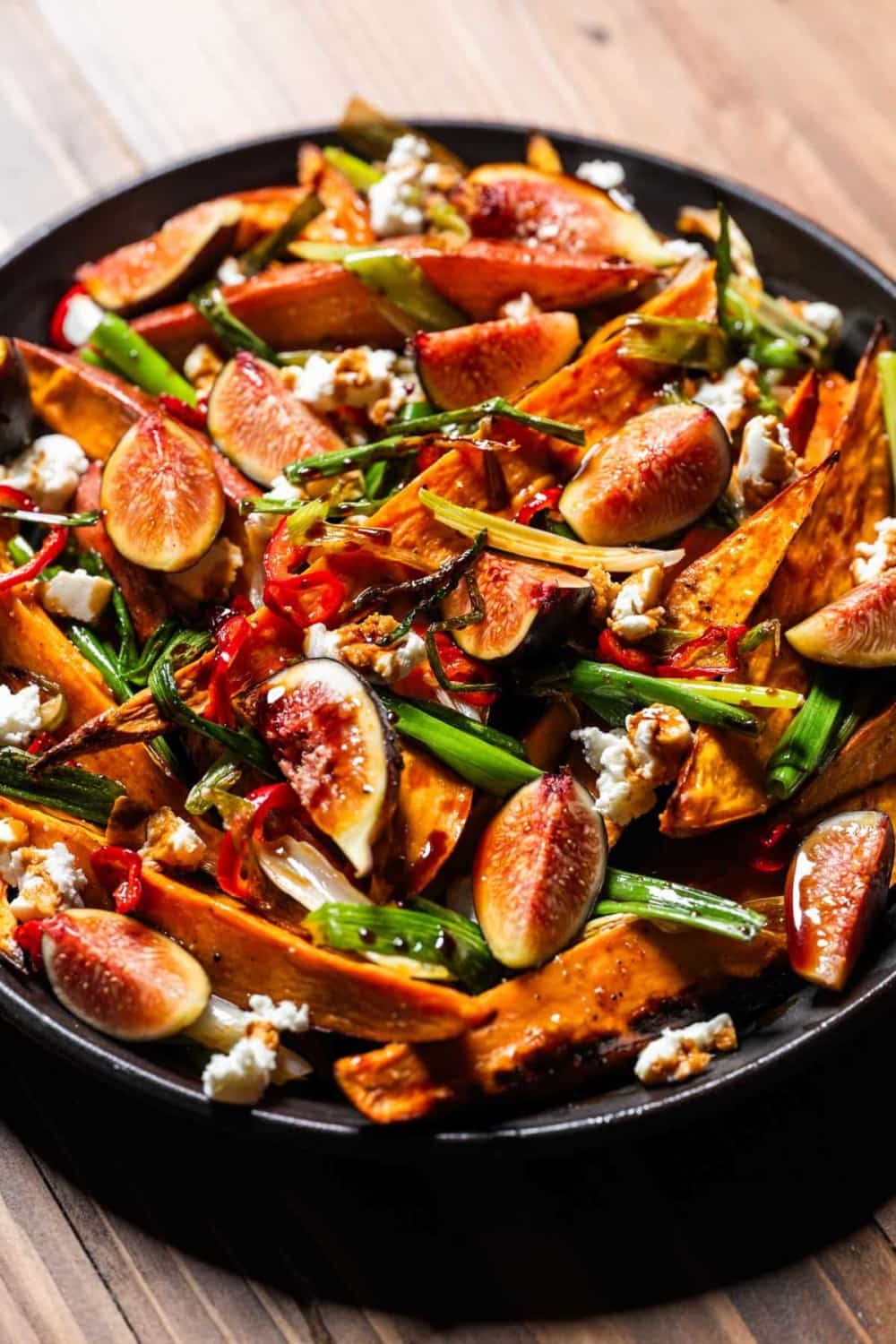
Roasted Figs with Brussels Sprouts and Prosciutto
The Schafer Family shared their recipe for Roasted Figs with Brussels Sprouts and Prosciutto. This sweet and savory dish will make a fig fan – and a Brussels sprouts fan – out of anyone.
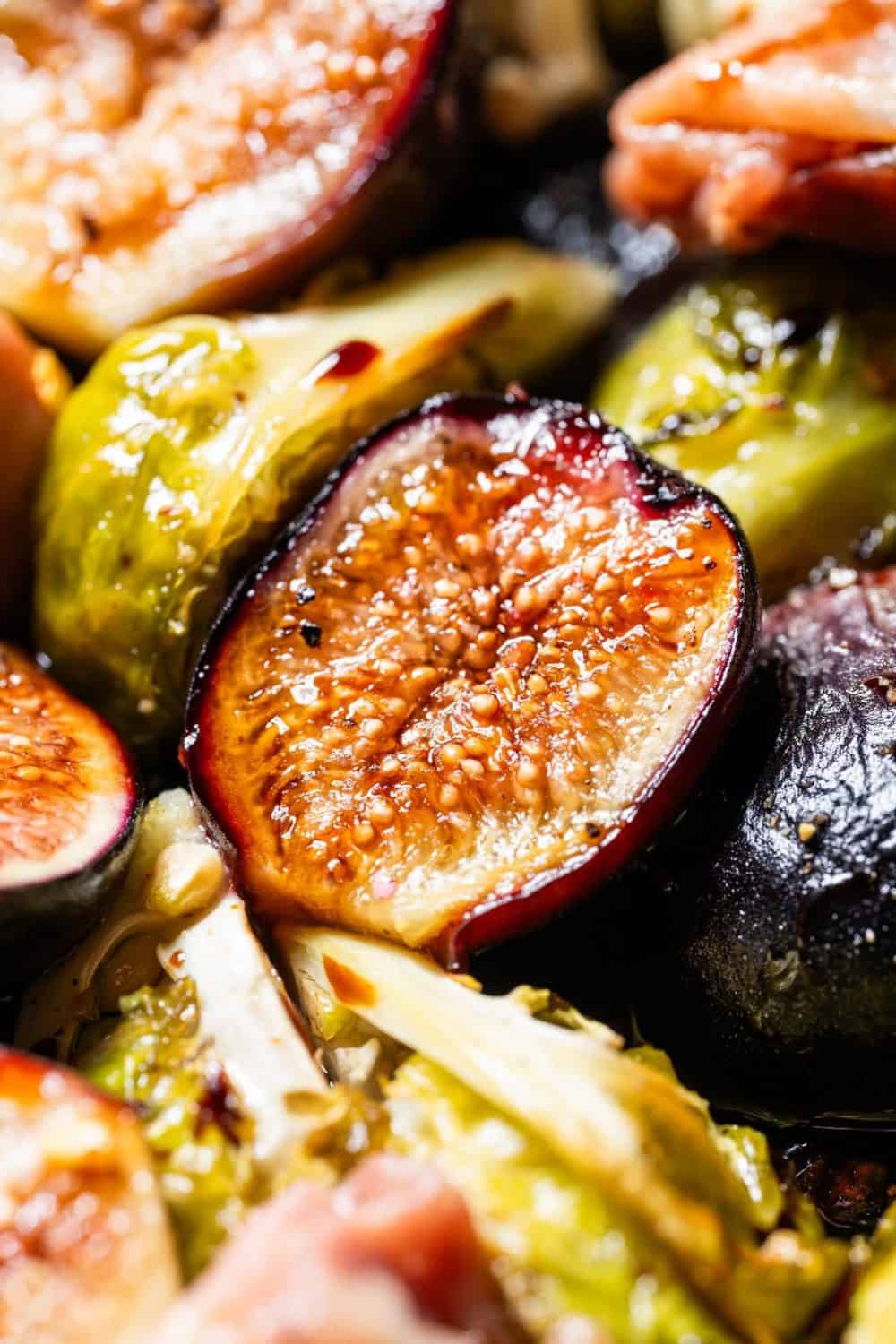
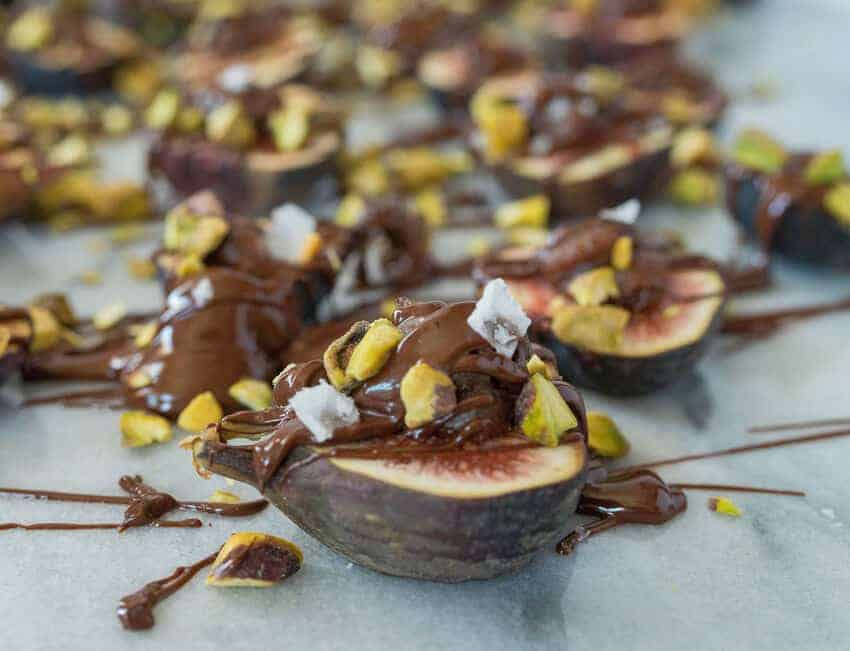
Figs with Date Caramel, Dark Chocolate + Pistachios
Are G-Free Foodie’s Figs with Date Caramel, Dark Chocolate + Pistachios a craveworthy snack or a healthy dessert? We’re going to need another bite before we decide…
Fig Sparkling Wine Cocktail
Use fresh figs to mix up a Fig Sparkling Wine Cocktail. We can’t think of a better way to celebrate fig season.


Figgy Brioche Buns
If you love cinnamon rolls, you’ll love these Figgy Brioche Buns from Britney Breaks Bread!
California Fig + Pistachio Chocolate Bark
Our friends at California Figs shared this incredible recipe for dried Fig + Pistachio Chocolate Bark. It’s easy to make…and even easier to eat!

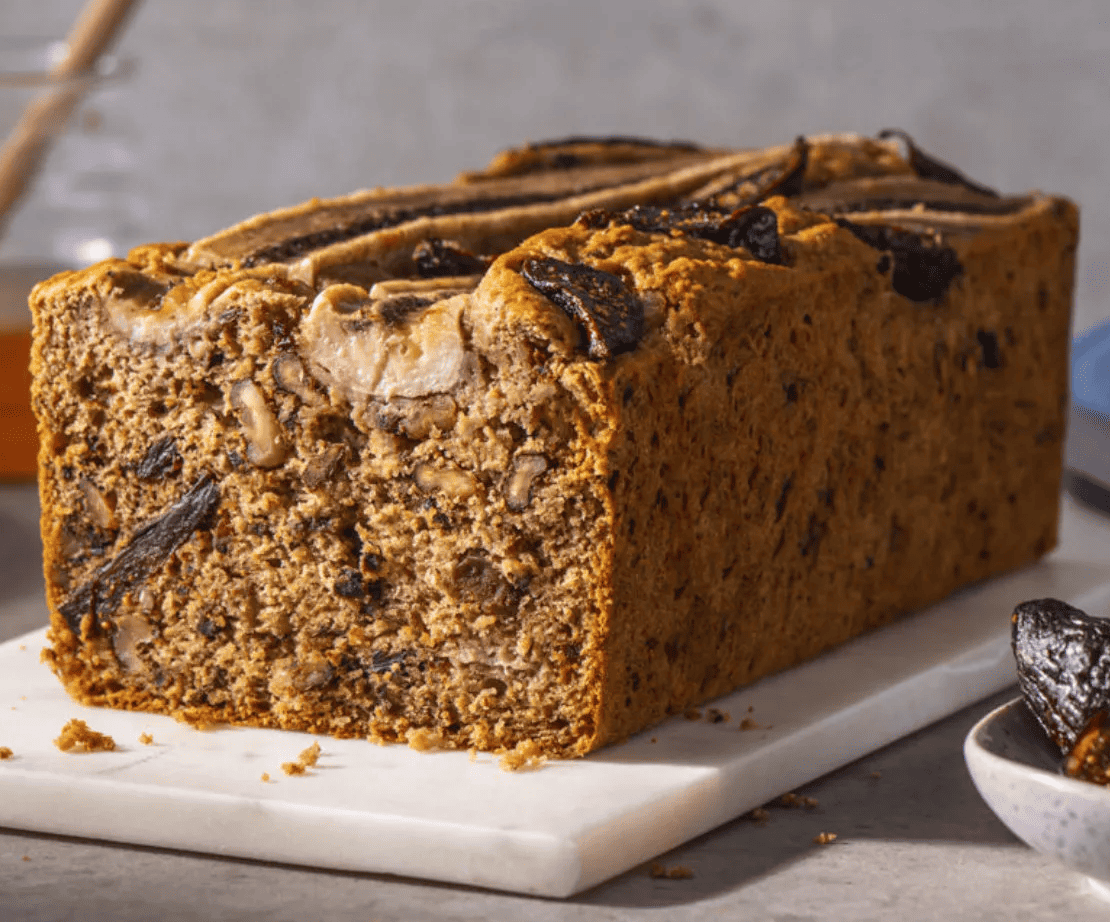
California Fig Banana Bread
Love banana bread? It’s even better loaded with delicious dried figs. We can’t get enough of this recipe from our friends at California Figs!
Spiced Fig Cookie with Nuts
This easy recipe takes traditional Oatmeal Cookies to the next level with the addition of dried figs and nuts. Yum!
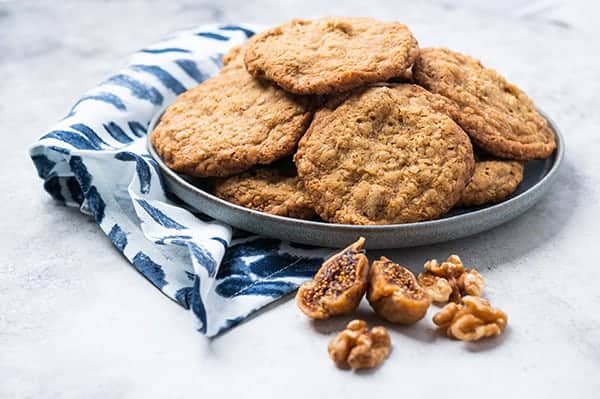
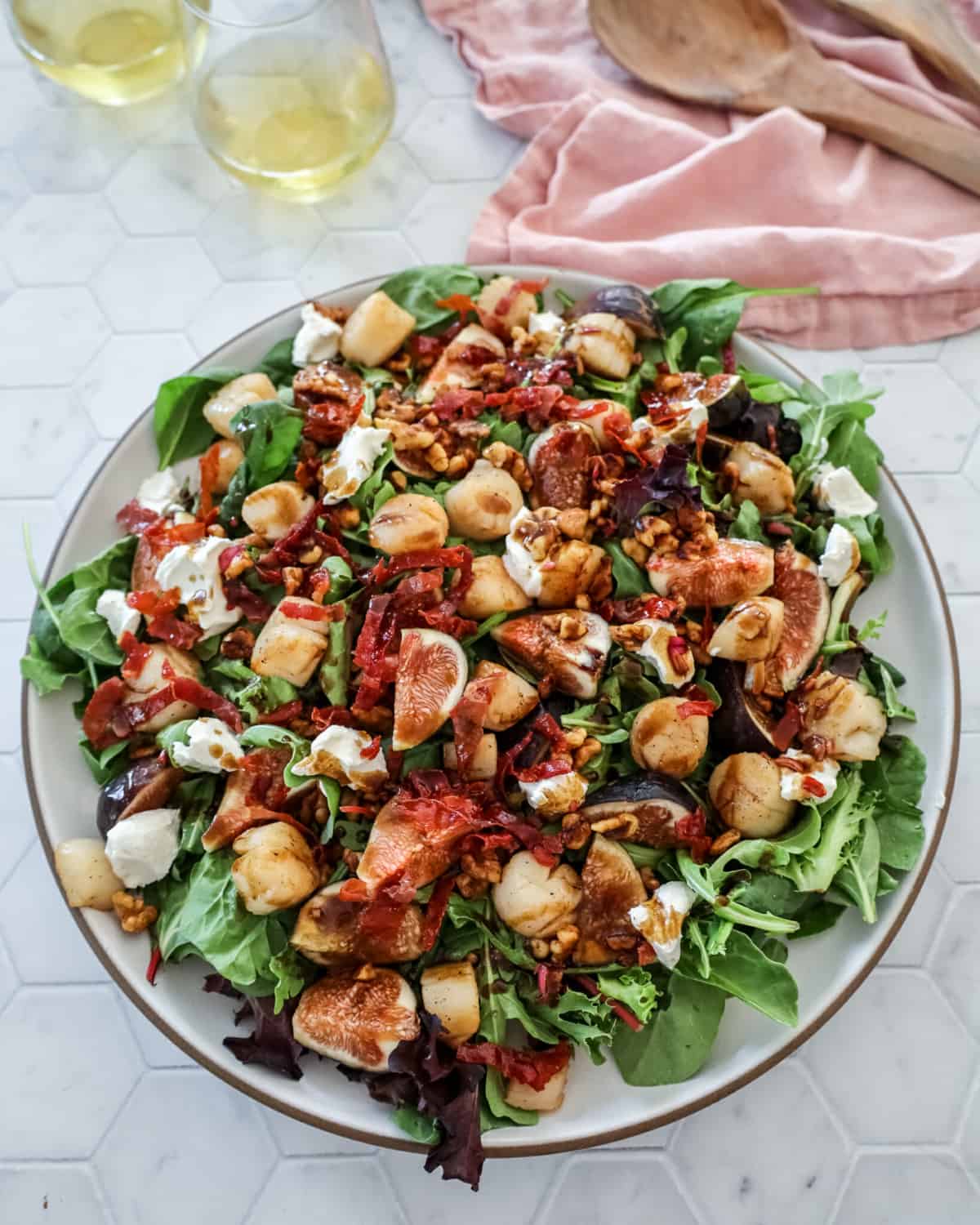
Fresh Fig Salad with Scallops
The delicate flavor of scallops is a surprisingly delicious foil for fresh figs in this Fresh Fig Salad from A Girl Defloured.
Fresh Fig Cake with Olive Oil and Almonds
We adore this Fresh Fig Olive Oil Upside Down Cake. This is definitely one case where too much of a good thing is, well….a very good thing!


Fig and Pistachio Pesto Pizza
Figs? On a pizza? If you have to ask, you’ve clearly never tried this delicious Fig and Pistachio Pesto Pizza from Baking the Goods.
Article by Hilary Rance. Photography by James Collier and Hilary Rance.

